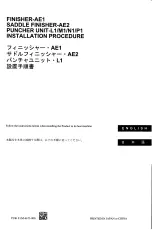
Size in mm (inch)
1
0
2.5
(8.2)
10
(32.8)
12.5
(41.0)
5
(16.4)
Distance in m (ft)
2
250
(9.8)
0
50
(2.0)
150
(5.9)
200
(7.9)
7.5
(24.6)
100
(3.9)
3
4
5
Figure 6: Minimum object size TiM36x
1
Size in millimeters (inc)
2
Distance in meters (feet)
3
Minimum object size
4
Light spot width
5
Light spot height
Size in mm (inch)
1
0
2.5
(8.2)
10
(32.8)
12.5
(41.0)
5
(16.4)
Distance in m (ft)
2
500
(19.7)
0
100
(3.9)
300
(11.8)
400
(15.7)
7.5
(24.6)
200
(7.9)
3
4
5
Figure 7: Minimum object size TiM31x/TiM32x
(max. distance: 4 m) and TiM35x
3.6.5
Impact of object surfaces on the measurement
Remission value
Remission is the ability of a material to reflect light. The remission value correlates with
the amount of laser light emitted by the LiDAR sensor which is reflected by an object
(see Lambert’s law).
Shiny surfaces have different remission values at the same distance with different
angles of impact. In the case of shiny surfaces, maximum remission is achieved when
the beam makes vertical impact.
Matt and dull surfaces have diffuse remission. Therefore, they exhibit similar relative
remission values with the same angle of impact regardless of the distance from the
zero point.
Table 4: Typical remission values of frequently used materials
Material
Typ. relative remission value
Rubber tires (vulcanized, black)
2%
Foam rubber (black)
2.4%
Photographic board (black, matte)
10%
Cardboard (gray)
20%
Wood (untreated fir, soiled)
40%
PVC (gray)
50%
Paper (white, matte)
80%
Plaster (white)
100%
Aluminum (black anodized)
110 … 150%
Steel (stainless, shiny)
120 … 150%
Steel (high gloss)
140 … 200%
PRODUCT DESCRIPTION
3
8024851//2021-07-21 | SICK
O P E R A T I N G I N S T R U C T I O N S | TiM3xx
17
Subject to change without notice
















































